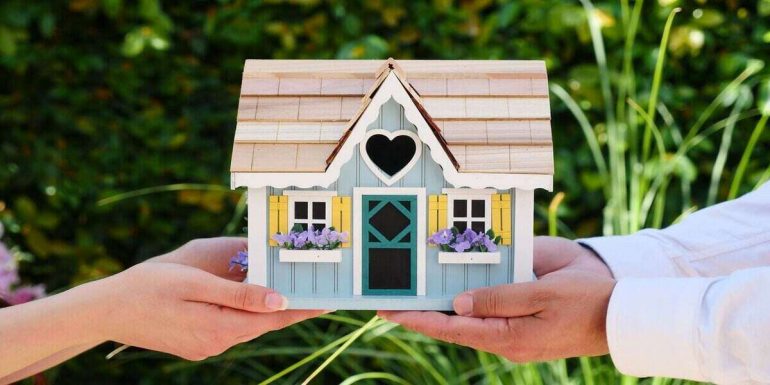Are you planning for moving to a smaller home? When you age, you may need to alter several aspects of your life, including letting go of the things you don’t need. You can call it downsizing, moving on, or kondo-ing.
‘Kondo-ing’ is a new term that stemmed from the popularity of a best-selling Japanese author Marie Kondo. She gained much recognition after airing her show on a popular streaming site.
You may choose to downsize by moving to a smaller home. People do this for a variety of reasons, and most often, the motives are the following:
- Retirement – When one retires, it’s primarily because of health issues, particularly mobility. Of course, as you age, you’ll have difficulty moving. A big house may be challenging to navigate, and a small one would better suit your condition.
- Kids Leave For College – Often, when kids leave for college, it follows a career and a new family. And that may mean a child leaving for college will only come back for occasional visits with grandkids in tow. All the rooms in your house will be vacant. There’s no sense in keeping a massive home with only two people.
- Change Of Lifestyle – Today, the concept of minimalism is fast becoming a revolution. Thanks to the novel art of organizing and the likes of Marie Kondo, people are seeing the value of keeping only things that would bring one joy. Many people are now embracing the minimalistic lifestyle.
- Moving To A New City– There are times one’s economic condition will force one to choose a place that will match their budget. It could be because of a job demotion, company cutback, or a rising cost of living. Moving to a smaller home in a new town will be more appealing and sustainable for one in such a state.
If you’re planning for moving to a smaller home, here are some moving tips to help you with the transition:
1. Purge Your Belongings

You need to accept the fact that you cannot bring everything. At least do a purge and select only the items that would fit your new home. If you have amassed plenty of belongings in your life, know that most of these items will find a new home and owners that will care for them.
So long as they’re in excellent condition, you may donate them to those in need. If you need help doing this, check out donation pick up in Downey. They’re a reputable organization staffed by veterans with the mission to improve the lives of US veterans and their families through donations.
2. Mentally Prepare For The Move
Psyching yourself up for the move is vital. Many people may not be truthful to admit this, but one of the most challenging parts of moving to a smaller home is dealing with the loss of space.
You won’t be able to stop yourself from comparing your new home with the old one. But before moving to a smaller home, tell yourself that you won’t do this. Repeating the words ‘I won’t compare my new home with the old’ in your head may help you resist the urge and see only the beneficial and positive things of your new home.
Mental preparation is essential in transitioning the stages of acceptance seamlessly. Another thing you can do is list down all the activities you can do in your new community and look forward to them.
Maybe there’s a nice park where you can sit with your partner or dog every afternoon, or maybe there’s a group of elders into tai chi that you can join. There’s always something new you can look forward to. All you need to do is look for them to make moving easier.
3. Scout Your New Home’s Storage Space.
Maybe it’s a small home with ample storage; then, you can keep some of your most treasured belongings. Before throwing stuff in the donation box, you may first want to determine the measurement of your future storage.
You can take a visit and see it for yourself or ask your realtor to send you photos and dimensions of the space. This way, you’ll be able to narrow your items down to the most essential that you can keep.
4. Measure Your Furniture

It wouldn’t make sense to give away your furniture and readily buy new ones without checking first if its size will fit your new home. Take out those measuring tapes and check the size and dimensions of your bed, sofa, tables, and other oversized items to know if you can keep, store or give them away.
If their size doesn’t fit in your new space, you may donate them to charity, sell them for a few bucks, or give them to someone you know who might need them.
It would also be nice to plan when decorating your new living space. Measuring your furniture can give you an idea of what style you can employ and maybe design the area even before getting there physically.
5. Get Rid Of Duplicates
There could be times you purchase several items in multiples while in your previous house. Maybe two kinds of a vase, or probably somebody gifted you with a thing you already have.
You won’t need two oven toasters or three types of the same rug, other people may benefit from them, so it’s better that you don’t bring them to your new space.
Even if a thing has a sentimental value – if you won’t need it, why keep it? But again, if it sparks joy in your life, you can hang onto it. And maybe assess again in the future, and you might feel differently.
6. Rent A Storage
If you have a lot of things you can’t get rid of because it has an extreme sense of connection with you, then you may need to rent storage so you can keep them there instead of cluttering your new home with these items.
Storage solutions are available everywhere, and you can rent whatever size of storage unit you need. Most of these storage facilities are climate controlled and offer 24/7 security to ensure that your possession is cared for.
7. Repurpose Some Of Your Belongings

Months away from your move, you may begin repurposing your belongings. Doing this will give a new life and meaning to an old item. It may also add character, depth, and style to them. Additionally, repurposing some of your things may find their way as decor in your new home.
Who knows, this activity could unleash newfound creativity and passion in you and maybe become a tremendously profitable activity.
Finding a new purpose for an old item can also serve the planet well. Anything that will not find its way into the trash bin will be a burden lifted off the ecosystem.
You can find many ways to repurpose old items on the internet and be as creative and outrageous as you want. A few remarkable things you can make are the following:
- Bowler Hats transformed into lamps
- Tennis rackets into mirrors
- Old piano into a bookshelf
- Bathtub into a couch
- Bike wheel into a clock
- Bicycle into a sink stand
- Skateboards into a kid’s picnic table
Doing this activity will help you find new intent for your old things and provide you with a unique aesthetic and style to decorate your new home.
8. Shop For Multifunctional Furniture
To best utilize the space in your new home, you may shop for multifunctional furniture. These types of furniture have been on trend for quite a while.
One piece of furniture with a dual purpose will save you space in many ways. One great example is an ottoman that doubles as a storage container when you lift the cushion top off.
This furniture would be great if you want to keep many reading materials in your living room for your guests to read. Instead of a bulky magazine rack, an ottoman that doubles as storage can keep your reading materials away and not cluttered.
If you don’t have a spare room for unexpected guests, there is a daybed disguised as a sofa. With this furniture, you can pull it to become a bed when you have a guest over for a night. Another exciting piece of multifunctional furniture is a wooden stair that doubles as a bookcase and a cabinet.
What’s great about utilizing multifunctional furniture is that they don’t just save you precious space. Such furniture can also be more cost-efficient and environment-friendly.
Conclusion
The trend for the most aging population is the phrase and concept ‘aging in place’. It is believed that about 90% of seniors would like to age in the comfort of their homes, provided that they can live independently.
This approach gives them satisfaction, a positive outlook in life, and a higher level of self-esteem, which is crucial for their mental health. Aging in place gives them the independence and fulfillment to live comfortably for the remainder of their lives.
Moving to a smaller home or downsizing can be done efficiently if you let go of the things you don’t need and give them to the less fortunate.




